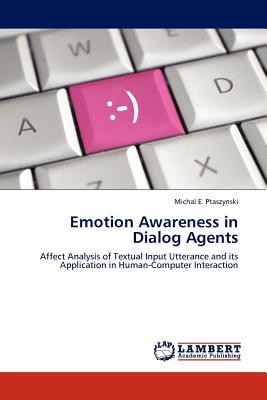
- We will send in 10–14 business days.
- Author: Michal E Ptaszynski
- Publisher: LAP Lambert Academic Publishing
- ISBN-10: 384543533X
- ISBN-13: 9783845435336
- Format: 15.2 x 22.9 x 1.2 cm, softcover
- Language: English
- SAVE -10% with code: EXTRA
Reviews
Description
This book describes my research on enhancing machines with Emotional Intelligence. I develop a set of affect analysis tools and propose methods for their efficient utilization. The first system, ML-Ask, separates emotive utterances from neutral and in the emotive utterances seeks for expressions of specific emotion types. The second system, CAO, extracts emoticons from input and determines the emotion types they express. The above systems are then utilized in two methods for enhancing of Human-Computer Interaction. The first is a method for automatic evaluation of conversational agents. In this method the information on user emotional engagement during conversation is reinterpreted to specify general attitudes to conversational agents. The second method determines whether emotions expressed by speaker are appropriate for the context of the conversation. The information on affective states of the user-speaker is confronted with gathered from the Internet list of emotions that should be expressed at the moment. I conclude the book with a discussion on other applications for the proposed methods and further work needed for full implementation of Emotional Intelligence in machines.
EXTRA 10 % discount with code: EXTRA
The promotion ends in 15d.09:04:19
The discount code is valid when purchasing from 10 €. Discounts do not stack.
- Author: Michal E Ptaszynski
- Publisher: LAP Lambert Academic Publishing
- ISBN-10: 384543533X
- ISBN-13: 9783845435336
- Format: 15.2 x 22.9 x 1.2 cm, softcover
- Language: English English
This book describes my research on enhancing machines with Emotional Intelligence. I develop a set of affect analysis tools and propose methods for their efficient utilization. The first system, ML-Ask, separates emotive utterances from neutral and in the emotive utterances seeks for expressions of specific emotion types. The second system, CAO, extracts emoticons from input and determines the emotion types they express. The above systems are then utilized in two methods for enhancing of Human-Computer Interaction. The first is a method for automatic evaluation of conversational agents. In this method the information on user emotional engagement during conversation is reinterpreted to specify general attitudes to conversational agents. The second method determines whether emotions expressed by speaker are appropriate for the context of the conversation. The information on affective states of the user-speaker is confronted with gathered from the Internet list of emotions that should be expressed at the moment. I conclude the book with a discussion on other applications for the proposed methods and further work needed for full implementation of Emotional Intelligence in machines.


Reviews